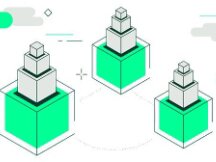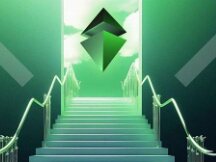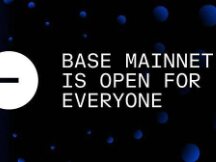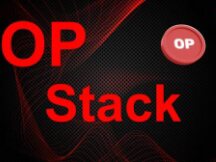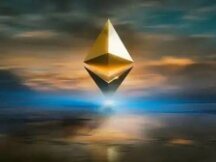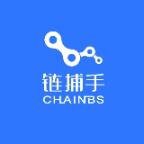What does Layer2 mean for the crypto world?
Ethereum has been plagued by network congestion and high fuel prices for the past year or so, as the Layer 2 proposal indicated. At the time, L2 looked like it was close to Ethereum's defenses to compete with other public channels in the market. However, so far the concept of L2 has been hotter and the importance of L2 throughout the crypto world cannot be seen solely in the "defense mechanism" against Ethereum.
Impossible triangle and monolithic blockchain
First, let's go back to the beginning of the blockchain impossible triangle.
The blockchain impossibility triangle indicates that due to limitations, only two of the three strengths of blockchain can be developed simultaneously, and only one of them must be sacrificed.
Our attitude (and their description) is:
1. Decentralization: the number of network nodes, the existence of a central node
2. Security: the difficulty of network attacks;
3. Scalability: System and TPS data rate.
In addition, in order to become familiar with these three products, there must be similar concepts:
1. Approval: Ensures the security and interpretation of the reliability of stored data.
2. Execute: replace the old state with the new state. This process must be completed by running a count. (change block N to N 1)
3. Data availability: The reliability of the data mentioned (all data created for block N) is guaranteed by the key fob.
At the start of the founding of BTC, we saw the risk of mistrust in the neighborhood, so we had to give it up as it needed enough security as a financial stability system when selecting a degree of adequate decentralization. scalability. Then most of the chains went for the POW protocol (eg ETH), but the popularity of blockchains has always been problematic because the target is sufficiently decentralized and secure, so the scalability is poor. .
In fact, we've always been stuck in a triangle that couldn't, the main reason is that most blockchains are now trying to complete the L1 (keychain) at the same time.Approvals, achievements and documentation availableThese three have created the problem now.
For security and decentralization, weIt reduces the hardware consumption of the block and reduces the hardware consumption of the node., which can join the network and become the node, but this makes the transition time, making it less scalable.
However, the reduction in the number of nodes also means that even with fewer computers becoming unreliable numbers, only certain nodes can be trusted, which does not hijack the distribution.
In other words, over the past decade, scalability limits have been reached to ensure blockchain centralization and security.
This type of blockchain, which is both responsible for our three principles of consensus, accomplishment, and available information, is called monolithic blockchain, and the path to monolithic blockchain appears to be too.
Modular roll-up and blockchain solutions
So let's change our mind so that the person responsible for the approval is solely responsible for how to obtain the approval, and the company employee is responsible for the work to improve the efficiency of the exchanges, and allow everyone to participate and participate. Does this solve the monolithic blockchain 'impossible triangle' problem?
Take the example of the Ethereum L2 stacking solution.
L2 creates a state-of-the-art Ethereum L1 free environment and changes the L1 state after the transaction. Additionally, rollups can reduce the exchange rate by a factor of 10 (with the possibility of refinement), while keeping ongoing processes complete by a factor of 10. without the cost of regulatory approvals and available documentation.
Specifically, the rollups compress industry batches and sometimes release a cutting edge update to Ethereum's critical network layer.
Rollup L2 doesn't need to focus on data visibility and availability, it just needs to focus on improving the business. The aggregation network is expensive to manage because the number of nodes (or 1 direct node) only needs to be run at all times. The rollup is cryptographically close to Ethereum L1, and security and decentralization issues won't be an issue, with Ethereum L1 being responsible for security and decentralization.
Hom blockchain architecture no hu ua blockchain modular.
In a sense, modular blockchain means distributing simultaneously the three available values of consensus, accomplishment, and information, for which the L1 keychain is now responsible, allows each level to focus on improving its performance. own level. , recognizes division functions and creates modular form.
In fact, we have similar functions in real life. For example, Alipay and WeChat which we usually use is L2 as the platform to manage transactions, and our debit and security cards are similar to L1, which is really responsible for the system of trading companies. .
Modular mode can improve operational efficiency.
The modularity of Ethereum
Let's discuss the first phase of Ethereum's modularity, rollup, and then take a look at two stages: POS and sharding.
With the PoS mechanism, Ethereum does not require a special computer for network security. Now, in theory, any computer can be used to play a role in network security.
Now the Ethereum PoS tag chain reduces operating costs for 32 ETHs and computers, allowing all users to access the blockchain. Although the cost of 32 ETH is still very expensive, it is already 10 times lower than the minimum mining of the POW (from $ 1 million).
In addition, decentralized staking pools such as Lido and Rocketpool or third party project parts will allow users to increase an amount of ETH for staking, thus increasing the number of capable validator users, where the restrictions of 32 ETH is not a difficult condition. Decentralization of the Ethereum network.
In addition, the situation where 10 million ETH promised to be safe after the point of sale exchange should also be true.
When ETH is delivered to the point of sale, the entire network will have a secure pool of validators, creating a strong trust layer (worth US $ 40 billion) and enough decentralization to operate. turn into recommendation. stage.
Partitioning (an application of the technology) enables the return of security across multiple chains of partitioning instead of focusing on the security of the entire system in a chain. Because there are 300,000 validators, secure monolithic blockchain is a cost effective way to allocate resources. And if the validators are referred to multiple fragment chains (64 fragment chains are uploaded in the first step).
Ethereum L1 will distribute around 4,500 validators for each chain, creating 18 monolithic Ethereums. (Initially, using 64 fragment chains did not increase Ethereum's capacity 64 times, but increased Ethereum chains 64 times, but the capacity of each chain was 1/3. total increased by 18 times)
After referring to the POS, the Beacon Chain is the Dispatcher of the capital, and for example, the Beacon Chain provides each witness with a unique chain and acts as a supervisor in the iron chain, and all cookies are provided randomly. It is returned at all times (approximately 6 minutes). In general, sharding maximizes the block of space available in L1!
The advantage of the design is that the optimization of each module improves the synergy of the other modules.
Improving network distribution by POS increases the number of shards in Ethereum.
Adding more shards to Ethereum L1 can increase the number of stacks in L2 by 10.
The increase in size will lead to a new type of chain operation, which in turn will increase the total cost of rollup to L1.
The more competitive the market, the higher the total cost you pay to buy the L1 blockchain. The oil war began between the L2s, resulting in increased demand for financial services without further inflation. Down (validator nodes will increase, but ETH costs will increase due to combustion deflation) Network is adding additional equipment.
These counting methods can be used to create multiple shards, and multiple shards means prices change faster. (Ethereum's first step was to complete 64 shards, but the ultimate goal was to increase it to 1024. Moore Law said that as personal computer processors increase, the power, number, and capacity of shards will increase. )
The combination of sharding and rollup changes the count of resources in an asset network rather than a collateral.
Modular blockchain economic sustainability
After the modularization of Ethereum, it is possible in a technical architecture and economically possible in a better sense.
The crypto-economic system uses exchange rates and sets up new coins to pay network security providers (POW miners or POS validators).
The higher the exchange value of a blockchain network can be, the less it needs to create new coins, reduce the cost of the entire network, and the more coins there are.
You can compare the inflation and feed costs of Polygon, Solana and ETH.
Polygon's PoS network generates approximately US $ 50-100,000 per day or US $ 18-36 million per year in exchange rates, while Polygon distributes over US $ 400 million in annual installments.
Daily exchange rates collected by Solana's point of sale network are around $ 100,000, or $ 36 million per year, but Solana is announcing a dangerous annual reward of over $ 4 billion.
On the other hand, in ETH's POW mechanism, the daily exchange rate is about $ 60 million, or about $ 22 billion per year, and at the same time, the annual turnover of ETH is around $ 20 billion. United States. (Currently Ethereum creates a block in about 15 seconds, and each block gets 2 ETH. The incremental rate is calculated at 11,500 ETH per day, 4.2 million ETH per year)
Also, after converting ETH to POS, the cost increase is smaller, so the annual increase should be between 570,000 and 1 million ETH. , competition in the market is also strong.
Future forecasts for layer 2
Rollup, which separates the business environment from the mainnet, divides ETH into agreement module (on-chain) and business module (off-chain), providing a great business idea. From here we areIn fact, this rollup is the best network solution today., speculation on the future market:
2022 will be the first year of L2. Many groups will start to create their own L2s to expand the market. L2 networks do not have to worry about the significant maintenance cost of the trust / security layer. You pay Ethereum L1 for the fuel to store the evidence and data to provide you with a secure collateral so that you can focus all of your efforts on improving the completion / counting process.
Second, an off-chain environment using rollups for faster modification, this design allows for faster delivery of new technology and benefits for improved performance. Moreover, L2 in the form of rollups is comparable to many functions called ETH side chains. The L2 Marketplace has great potential as it is more secure and distributed by Ethereum compared to many public EVM channels.
As the industry improves, there will be L1 sidechains or new companies that they will find unmatched and will need to provide expensive approval procedures and data frameworks. The ecology of money, the value of money has contributed to the stimulus power (transition to the L2 network of Ethereum).
They will be able to continue to manage their history, community, usage, etc. with the benefits of the entire Ethereum ecosystem without having to worry about all of the trust / security features.
Since the stacking process does not recognize web2 time, web2 internet companies will definitely have a place in the future, they will use this method to enter the web3 era soon and then focus on creating their own quality. . , no more worries about the level of security and distribution.
In four years, in the next cycle, there will be a "public channel" war. Although topics like technology, capital, consumers and culture have been discussed many times, at present the leader is no longer L1, but L2, the best ecosystem L2 roll-up will surely go prosper and increase the value to $ 100 billion and the investment will be on all of L2. It will increase its value to around $ 10 billion.
Finally, Ethereum will gradually move to a cloud-based blockchain infrastructure, providing the world with a proven approval process (2 bulls and bears round) to ensure security, deployment and formation of significant operating costs. , all group purchases require payment for expensive bulk packaging to complete chain payment. As a result, everyone will gradually see Ethereum as the number one global payment platform in history.

Scan QR code with WeChat




